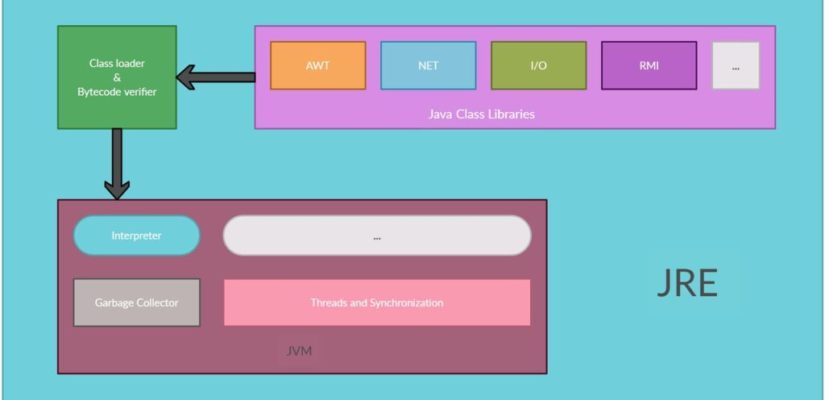
Everything to Know about Java Runtime Environment for Application Development in 2022
Java platform comprise of Java Development Kit (JDK), the Java Virtual Machine (JVM), and the Java Runtime Environment (JRE). These three are powerful components of Java platform for developing and running applications. In this blog post, we are going to learn about the Java Runtime Environment, which is a crucial part of Java environment.
A runtime environment is a piece of software known to run other software. Being the runtime environment for Java, the JRE comprise of Java class libraries, the Java class loader, and the Java Virtual Machine. This system includes:
- Class loader – It is responsible to correctly load classes and connect them with the core Java class libraries.
- JVM – It is responsible to ensure Java applications have the resources they required to run and work well in your device or cloud environment.
- JRE – It is mainly a container for those other components, and is responsible for orchestrating their activities.
Introduction to Runtime Environment
A software program is designed to execute, and for that it requires an environment. The runtime environment loads class files and makes sure there is access to memory and other system resources. Earlier, most software applications use operating system (OS) as their runtime environment. The program ran within whatever computer it was on, but depends on operating system settings for resource access. Resources in this scenario would be things including memory and program files as well as dependencies. The Java Runtime Environment changed everything, at least for Java applications.
Introduction to Java Runtime Environment (JRE)
Software is basically a series of layers that appears on the top of the system hardware. Each layer offers services that are needed by the layers above it to implement. The Java Runtime Environment is a software layer that operates on a computer’s operating system, offering additional services particular to Java.
The JRE is compatible with every operating systems, ensuring that Java Development Company can build programs to run virtually on any OS without any modification. It also offers value-added services. Automatic memory management is an essential service of JRE, ensuring that developers don’t have to manually manage the allocation and reallocation of memory.
Installation and Use of JRE
There is a conceptual side associated with JRE but in reality it’s just software installed on a computer device. Its sole objective is to run Java programs. Developers work with the JDK and JVM, because those are the components used to develop and run Java programs. User mostly interact with the JRE, which lets you run those programs.
In most scenarios, a computer device come installed with Java, and the JRE will be included too. But if a situation arise when you need to manually install or upgrade, just download the current JRE version from Oracle.
Java memory and the JRE
Java memory include three components: the heap, stack and metaspace.
- Metaspace is where the Java keeps the program’s unchanging information including class definitions.
- Heap space is where Java stores variable content.
- Stack space is where Java keeps function execution and other variable references.
What does JRE consist of?
Apart from Java Virtual Machine, JRE comprise of several other supporting software tools and features to get the most out of your Java apps.
Deployment solutions
It is included as part of the JRE installation. Major deployment technologies including Java Web Start and Java Plugin simplify the activation of applications and offer advanced support for future Java updates.
Development toolkits
The JRE includes toolkits designed to support developers boost their user interface. Some of these toolkits comprise:
- Java 2D – An Application Programming Interface (API) used to draw two-dimensional graphics in Java. Developers can build rich user interfaces, special effects, games, as well as animations.
- Abstract Window Toolkit (AWT) – A GUI (Graphical User Interface) known to build objects, buttons, scroll bars, as well as windows.
- Swing – Another lightweight GUI that uses a rich set of widgets to provide flexible, and user-friendly customizations.
Java Application Monitoring
Although application monitoring is a JVM function, the JRE provides configuration features, which are essential for monitoring job. A variety of tools are available to monitor Java applications, from the classic ones to complex remote monitoring solutions including Oracle’s infrastructure monitoring.
In between these options are visual profilers including VisualVM that support for inspecting a running JVM. These tools support tracking down hotspots and memory leaks, as well as analyzing overall memory consumption within the system. To make optimum use of these tools, simply hire Java developer from a reputed development company having relevant resources to serve complex application development.
Conclusion:
The Java Runtime Environment is an on-disk program that helps to load Java applications for the JVM to run. A JRE is included automatically when you download the Java Development Kit, and each JRE comprises the core Java class libraries, a Java class loader, and a Java Virtual Machine. It’s important to learn how the JVM, JDK and JRE interact, particularly to work in cloud and DevOps environments. In such environments, the JRE takes a stronger role in monitoring and configuration than it would in conventional Java application development.

